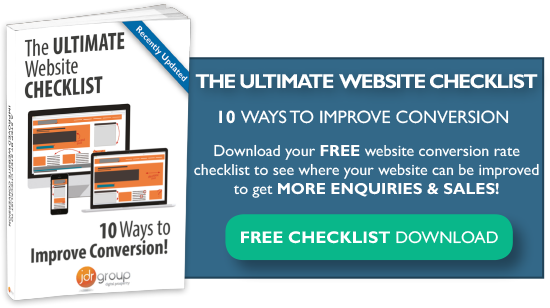5 Steps To Avoiding The Wrong Type Of Website Enquiries

In today’s world, decision makers are extremely busy, and they don’t have the time to be spending hours on a website to see if they want to convert with your company or not. The most annoying thing about the internet is when you, as a consumer, are trying to find something specific, only to finally realise that the prospective supplier doesn’t make or stock that specific product. So, to save time for the consumer and to get them to convert quickly and efficiently, you need a clear and accurate website – one that represents what you do and don’t do, at lightning speed. We’ve made a list of how to avoid the wrong type of website enquiries below, to help you along the way:
1) Always Clearly Define & Show What You Offer
A user should be able to tell exactly what your business does within the space of a few seconds, when they land on a specific landing page on your website. Remember that this is the point where everything counts – from your imagery to your branding and your headlines and subtitles. Your navigation menu should be smooth and clear and your CTA (call-to-action) should also be readily available and defined.
2) Do Not False Advertise
When you claim to provide a certain service to people when you don’t, it just creates confusion and frustration. Even if your business does very little specialisation, it is best to be honest about it. Remember that false advertising also includes misleading prices, so be honest from the start before you have irate consumers trying to get you into trouble. ‘Prices from’ that turn out to be far lower than the quoted price are good at getting eyes rolling and poor at bringing home conversions.
We all know that business and products change – so remember to update your website every time you have a price change on a particular product. This removes any confusion, and this should be done across the board – from pricing and explanations all the way through to your trading hours on your contact us page and Google listing.
3) Create Separate, Individual Landing Pages
Landing pages can be a lot of extra work, but they do indeed boost your website from an SEO (search engine optimisation) point of view. The structure and design of your landing page is also rather nice, as it can have imagery, video and copy that is specific to that product or product range. Landing pages should have the following:
- Accurate meta data so that Google can rank your landing page highly based on specific keywords.
- A relevant URL that is SEO friendly. URL structures also form part of Google’s algorithm so you most definitely want to get this right. For example, a paint landing page should be www.domainname.co.uk/paint and not a random name like www.domainname.co.uk/index-9fh402k, so that it is ranked for paint and not lost in the greater scheme of the search engine world.
- Your landing page must have strong CTAs. This helps guide your users to convert and they should know, by clicking on the conversion button, that they are ready to purchase.
4) Always Use Negative Keywords In Google AdWords
This is a big mistake that many brands make. Always use negative keywords when you run a Google AdWords campaign. Why? Well when someone searches for “women’s shoes” and you stock only heels, you can use the negative keyword “running” in your campaign, so that when someone searches “women’s running shoes” your ads do not show up as you do not offer that product. This may sound tedious, but it does essentially refine your customer base online and gets you quality leads rather than high quantity leads for no reason, and with no conversion.
5) Carefully Deign Your Contact Forms
Usually, contact forms are taken for granted on a website, and everyone tends to do what other brands do on a form. But remember that people are busy and the last thing you want is for them to have bought into your brand and product/s and now get irritated with hundreds of fields to fill in on a contact form. So keep your forms short and to the point because sometimes, you don’t need a tonne of information from the customer, and they will be happier not having to fill out a ream of information for you. Remember to add a captcha code so that you can eliminate spam too!
Turn Your Website Into A Lead Generation Engine
Your website is your online hub – so give it the time it needs in order for you to communicate what your offering is quickly and easily. Have fun with it – experiment with landing pages and imagery as well as your SEO tactics. You never know where you’ll find those golden nuggets to capitalise on!
If your website could use a refresh but you don’t know where to start, don’t call a web designer, who is unlikely to have marketing experience. Instead, contact a business growth agency like JDR. We have talented web designers and programmers on our team, coupled with – essentially – an extensive staff of marketing and sales specialists. This ensures that quality content and business growth are the cornerstones of every website we design. After all, a website is not just there to look pretty – it also has a job to perform.
Get in touch with one of our growth specialists today to discuss how your website could be updated to bring in more quality leads.


